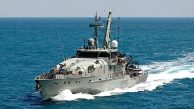
Australia, US Wrap Up Major Naval Drone Exercises with AUKUS Partners
Australia and the United States concluded the core phase of a three-week naval drone exercise at Jervis Bay today. Known as Maritime Big Play (MBP), this exercise is part of the AUKUS alliance’s “Pillar II,” which fast-tracks new technologies for autonomy, cyber, electronic warfare, and underwater systems.
The exercise allowed AUKUS partners — Australia, the US, and the UK — to collaborate on deploying and maintaining uncrewed systems. This approach strengthens coalition operations and enhances undersea situational awareness. Madeline Mortelmans, acting Assistant Secretary of Defence for Strategy, praised MBP’s role in advancing these capabilities, noting that it enables forces to operate autonomously in realistic scenarios. One focus this year was expanding the deployment of uncrewed underwater systems launched from British and US submarines, extending operational range and capacity.
The “signature” event of MBP 2024, named Exercise Autonomous Warrior, highlighted advanced uncrewed systems from both nations. The US contributed a range of innovative technologies, including software-defined acoustic modems, autonomous underwater vehicles, and cost-effective unmanned surface vehicles. Additionally, the US demonstrated stratospheric support using high-altitude balloons capable of facilitating communications in jammed environments.
A key objective was developing a unified control system to streamline command across all AUKUS unmanned technologies. This led to tests on the Multi-Domain Uncrewed Secure Integrated Communications (MUSIC) system and the Common Control System (CCS). The MUSIC system promises seamless integration across diverse operational environments, while CCS aims to pave the way for a shared control framework, allowing for standardized hardware and software across partner platforms. Heidi Shyu, Undersecretary of Defence for Research and Engineering, noted that these collaborations create economies of scale, reducing acquisition, maintenance, and training costs.
Australia brought its own innovations, including Innovaero’s OWL-B strike glider, Ocius Technology’s Bluebottle uncrewed surface vessel, and C2 Robotics’ Speartooth underwater drone. Pat Conroy, Minister for Defence Industry, highlighted the Albanese Government’s commitment to bolstering domestic defence tech, recognizing these innovations as vital for Australia’s strategic defence goals.
The UK also participated in portions of MBP, with Japan observing as a prospective partner in the autonomous systems domain. The joint exercises underscore AUKUS’s vision of shared technological advancement, aiming to foster resilient maritime capabilities among the allied nations.




